[embedded content]
You’ve spent good money on a quality solar system, and you want to keep that system running problem free. A good way to achieve that may be by undertaking some solar panel cleaning from time to time. But is it worth it? How do you go about it? Is it safe? For those who love a bit of DIY around the home, this blog will help you answer these questions and provide some important tips for solar panel cleaning and maintenance.
Is Solar Panel Cleaning Worth It?


Before I explain the DIY approach, is solar panel cleaning even worth it? Google has done a bit of this work for us. In 2009, their team conducted a study that tested solar panel cleaning on two of their arrays. One array consisted of entirely flat-laying solar panels; the other was a traditional tilted array. After 15 months of no cleaning, they found a post-cleaning production increase of 36% for the flat laying array but an insignificant production increase for cleaning the tilted array.
Now here, the definition of flat is something important to consider. Nearly every panel manufacturer’s installation manuals would define flat as anything pitched under 10°. In fact, many manuals may reject warranty cases if panels aren’t installed to at least 10°, with the below being a common recommendation in manuals.


To keep your warranty, installation guidelines must be adhered to, so the above is an indirect warranty loophole for manufacturers to potentially abuse. Watch this for more info on panel warranty loopholes.
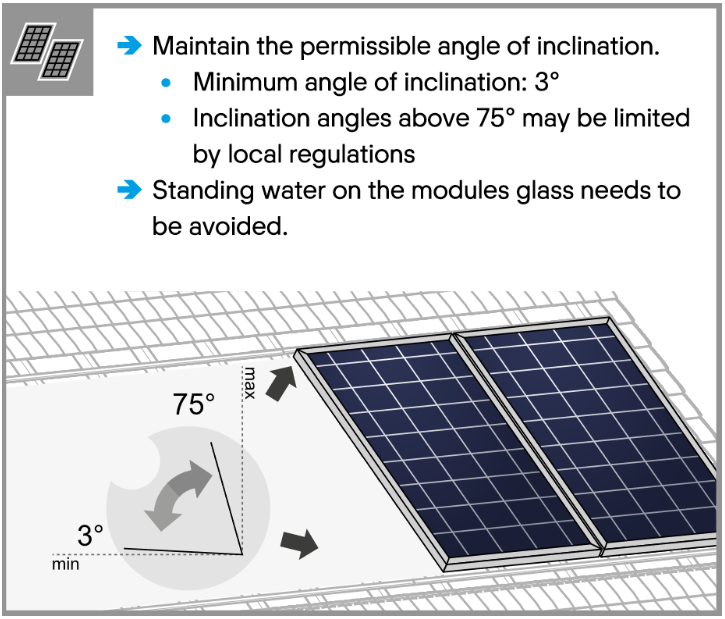

Q.Cells have a slightly better inclination requirement, allowing panels to go down to 3° while maintaining warranty. However, for self-cleaning, I’d still stick to the 10° rule if possible.
But just because you have a tilted solar panel, doesn’t mean you’re free from ever cleaning your panels. You could live in a semi-industrial area that gets dust. You could live near falling leaves or sticks. Or, your array may simply be target practice for passing birds. I’m sure the below bullseye is very tempting.
My final point will explain how to know for nearly certain if cleaning your panels will be worth it. But for now, let’s assume you just want to get to cleaning.
Solar Panel Cleaning Risks
You should know there are risks involved with cleaning your solar panels. You’ll be working with electricity, water and heights all at the same time. My strong recommendation is to use a professional panel cleaning service, like these guys in Brisbane:
But if you are going to go ahead and do it yourself, I’d rather that you don’t make the most common mistakes that will hurt your solar panels and hurt your pride.
Step By Step Solar Panel Cleaning


- Before you get on your roof, turn your solar system off. There is a right and wrong way to turn your solar off, if you don’t know how, check out this video. Turning your solar off will help prevent damage to your inverter if you create a fault while you are on the roof. But remember the cables on the roof will still be live, so keep that in mind.
- Please take your time getting up on the roof. Tie off your ladder, and ideally, use a harness.
- Hopefully, I shouldn’t have to say it, but just in case, don’t walk on your solar panels! Most good installers know that walking on panels will cause microcracks, which are not covered under any panel manufacturer’s warranty.
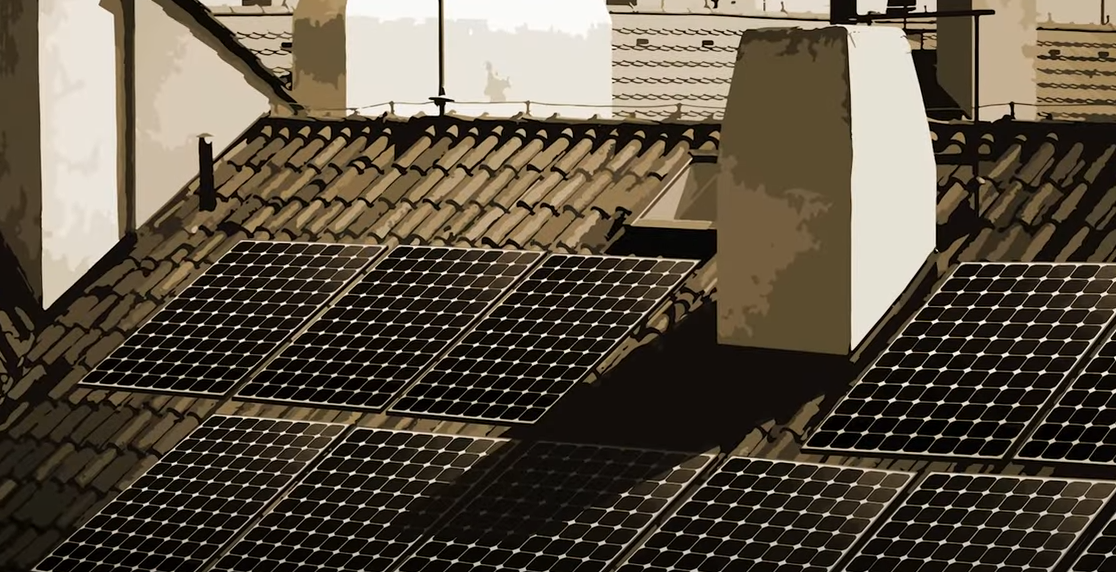

- If you have semi-permanent shade on any of your solar panels, like overhanging branches or a newly installed whirly bird, you’ll need to get rid of that. Permanent shade is the fastest way to burn out a solar panel. Actually, most panels are not warranted for any type of shade even late afternoon shade.
- Check the cables are not drooping down and touching the roof. You won’t find this on one of our jobs but if you do notice cables touching you roof, take a photo and send it to your installer. Check under your panels for possum or bird nests or leaf build-up and remove it.
Now on to the cleaning. There are many ways to go about this. Some are right, some are wrong, some are over the top, some are irrelevant, and some are too expensive. The journal Sustainability published a paper in 2022 titled: Solar Panels Dirt Monitoring and Cleaning for Performance Improvement: A Systematic Review on Smart Systems. While Google discussed the viability of Solar Panel Cleaning, the Sustainability Paper looked into the methodology of doing so. Their reviews included:
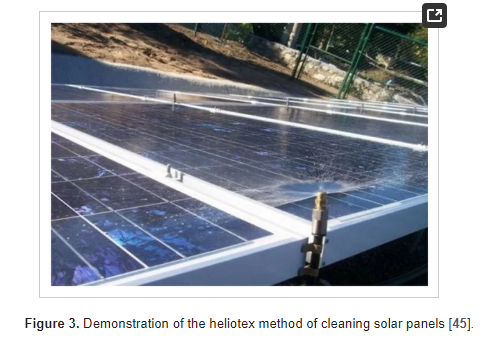

- Brush Cleaning
- Heliotex Cleaning
- Electrostatic Cleaning
- Coating Cleaning
- Vibration Cleaning
- Forced-Air Cleaning
These systems sound complicated, but it’s essentially robotic methods of cleaning for solar farms. The most cost-effective method was found to be Heliotex Cleaning, which is essentially just spraying water onto the solar array. Brush Cleaning was also found to be quite effective, which is exactly as it sounds.
We can do that ourselves and remove the expensive robotic middleman. It’s just as simple as it sounds – spraying your solar panels with a hose and a soft bristle brush.
However, before you wash your panels, remember there is an antireflective coating on them. As such:
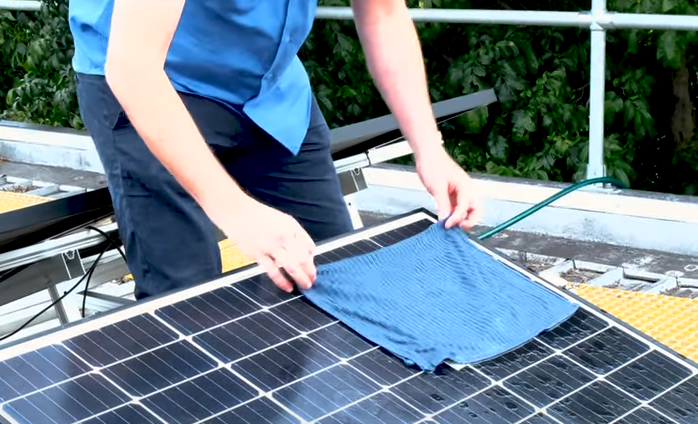

- Don’t use a scourer or any harsh chemicals on the panels, or you’ll scratch the antireflective coating.
- Don’t use a pressure cleaner. If a bat has left you a particularly stubborn surprise, just wet an old rag and throw it over the surprise for half an hour or so, and then you should be able to wash it off with a brush and hose.
- Be careful because, very occasionally, a possum will make a meal out of your cable insulation. These cables will still be live even though you have turned off the solar inverter. If you see chewed cables, get off your roof and call a sparkie.
Have a visual check that all panels are secure and all panel clamps are in place. Again, if you have any concerns contact your installer. If you have a tile roof, look for cracks, and while doing so, make sure you don’t crack the tiles yourself.
If you have a rooftop isolator, just make sure that is all in-tact and it doesn’t look like there is water getting into it. Do not undo it, or you will most likely cause a future leak.
Jump down off the roof, go to your inverter, and look for any obvious damage to your inverter, isolator or cables. If all looks good, turn your solar system back on. In reality, it’s not important which switch you flick first when turning it back on, but switching on the DC at the inverter is the common method. Wait a few minutes for the inverter to do safety tests and then it will start producing power again. Congratulations, you’ve just finished your home DIY solar panel cleaning!
If we look back to the Final conclusions from the Sustainability paper, they write:
Ultimately, the optimal frequency and cost of cleaning must be determined with monitored data
This leads us to our next and most important point.
How Do I Know if I Need Solar Panel Cleaning?
Cleaning can be dangerous if done incorrectly, and it could be expensive if not required. There is a very easy and obvious way to found out if solar panel cleaning is going to even help you – and that’s Solar Monitoring.
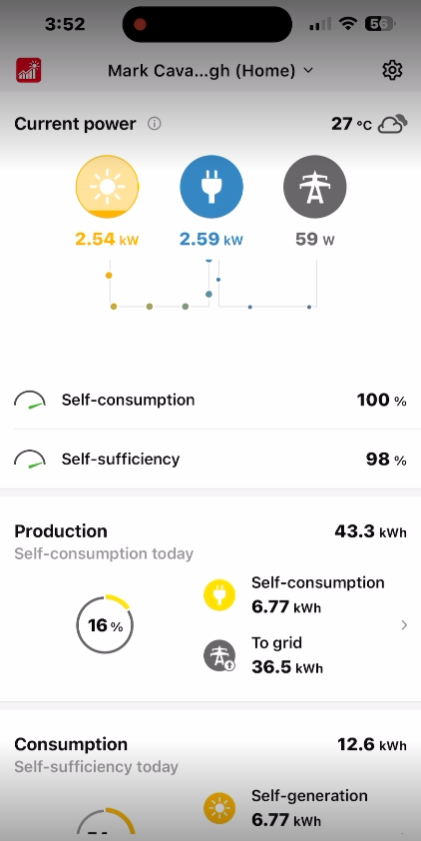

Most inverters these days come with an online monitoring platform. You just need the inverter configured properly during commissioning, and a stable internet to maintain the WiFi connection. You can and should opt for an additional layer of monitoring – called consumption monitoring – with most inverters coming with the option to do so. However, the relevant feature here you should be looking at is production monitoring.
If installed and configured properly, your system has the ability to log the exact kWh it produces each day, and push that data online for viewing. You can access this data and look back historically to see how it has performed over time. This is not only important to confirm the sales guys’ performance promises were real, but it can be invaluable to confirm the ongoing health of your system.
If you choose, we at MC Electrical also have access to your production data alongside with you, with designated people in our staff actually going through the data to catch problems before they arise. This includes grid voltage spikes, mismanaged or mistimed load controlling, and of course, higher-than-expected panel degradation. If your system is producing notably less than it should be, and the voltage/current levels look normal, this is very easy to quantify the requirement for solar panel cleaning.
Solar Monitoring can also help post-cleaning and is how Google and others came to their conclusions. Once cleaning has been completed, you’ll be able to calculate performance increases, if any, to justify the cleaning you’ve just had, as well as aiding in your decision for repeating the cleaning process in the future.
Conclusion
Generally, if your roof is pitched above 10°, it’s unlikely that you’ll require frequent solar panel cleaning. However, cleaning your panels is still a good idea, and you may be in a more susceptible area, have a particular bird problem, or simply want to look after the system you’ve paid good money for. Just be careful cleaning and working around your panels, and remember the simple methods work best. If you’re not sure one way or another whether cleaning is going to do anything, solar panel monitoring is one of the most sure-fire ways to confirm or deny the need to do so. If you do end up confirming cleaning is going to be beneficial to you, and you want to try and do it yourself, I hope this blog provided some important tips and made the exercise a safe one.
- SEO Powered Content & PR Distribution. Get Amplified Today.
- PlatoData.Network Vertical Generative Ai. Empower Yourself. Access Here.
- PlatoAiStream. Web3 Intelligence. Knowledge Amplified. Access Here.
- PlatoESG. Automotive / EVs, Carbon, CleanTech, Energy, Environment, Solar, Waste Management. Access Here.
- BlockOffsets. Modernizing Environmental Offset Ownership. Access Here.
- Source: https://www.mcelectrical.com.au/solar-panel-cleaning/




